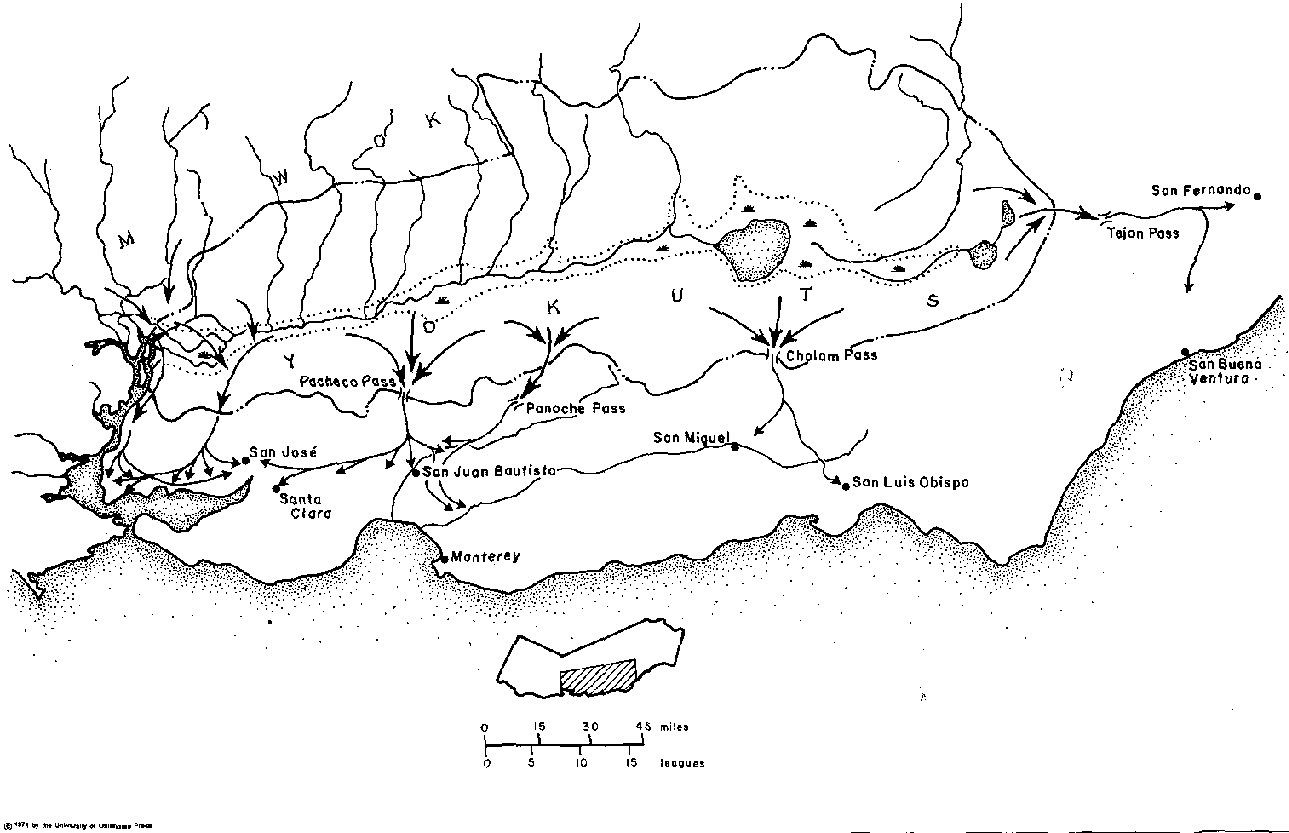Mexican authorities met the threat by the old policy of expeditions. As these forays frequently punished the innocent Indians as well as the guilty, they made conditions worse. By 1840, the natives were so strong that such inland expeditions were both costly and dangerous. In 1833, Governor Jose Figueroa ordered that "from every presidio a military expedition shall set out each month and scout those places where the robbers shelter themselves." In 1840, Governor Juan B. Alvarado ordered a military force to patrol the mountain passes and prevent the Indians from using them. And in 1843 it was proposed that a stockade (or fort) be built in Pacheco Pass; in other words, Hispanic officialdom had shifted from the offensive to the defensive as the "first" Californians threatened their very presence.
The basic reason for the Miwok-Yokut raids was the conflict between the California Indian and white civilization. This first arose at the missions when neophytes, unhappy with the confinement, labor, punishment, diet, disease, or just homesick, sought to return to their native state. From the founding of the first mission, Spanish authorities had been kept busy returning such runaways, but as secularization neared in the 1830's and conditions at the missions became increasingly chaotic, the number fleeing increased dramatically. Having been trained by the Spanish, these runaways, such as Estanislao, often provided the wild tribes with superior leadership. In addition, these neophytes desired certain items they were used to at the missions, but which now could only be obtained by raiding.
